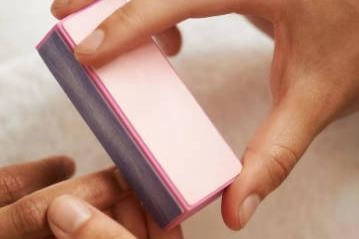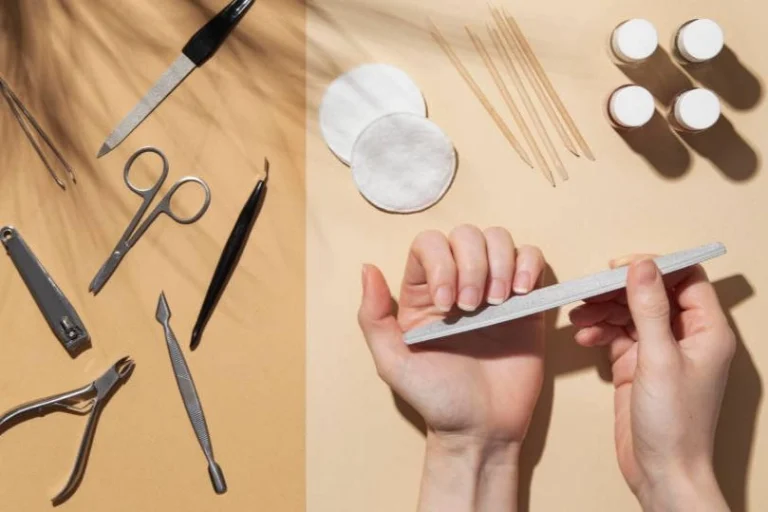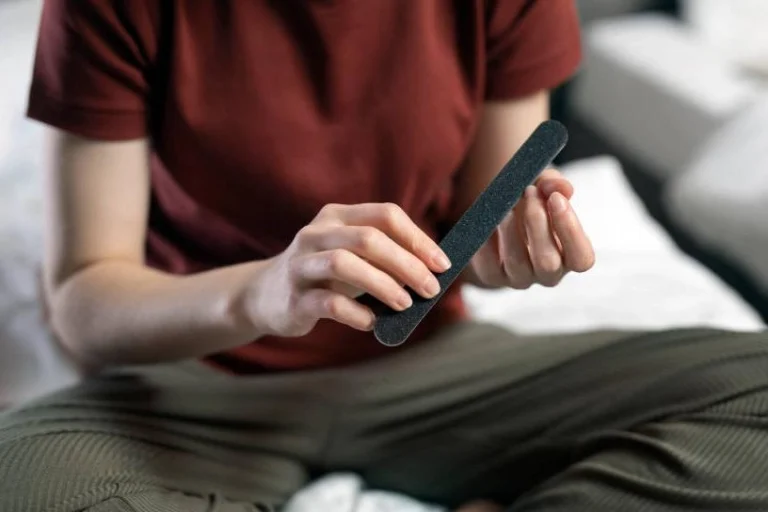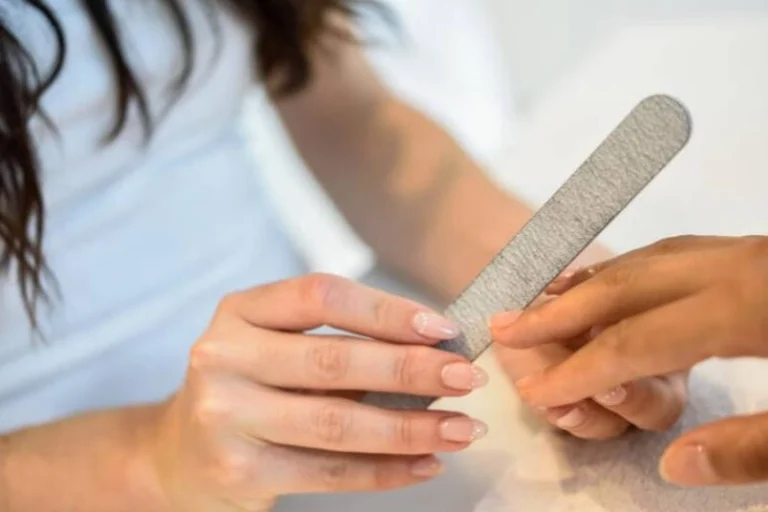.webp)
What Are Grit Levels in Nail Files?
Grit levels show how rough or smooth a nail file’s surface is. The number tied to a grit level tells how many rough bits are in a square inch of the file. A smaller number means a rougher file. A bigger number means a smoother one. For example, an 80 grit file is much rougher than a 240 grit file. The “80 80” label shows both sides of the file share the same grit. This sameness guarantees steady results when using it.
Introduction of 80 80 Grit Nail Files
Nail files are vital tools in the beauty and nail care world. They help shape and perfect nails for a neat appearance. Among the many options, 80 80 grit nail files shine for their special role in professional nail work. These files have a rough surface. This makes them great for certain tasks. Built for tough jobs, they suit experts who need accuracy and speed in their craft.
Key Uses of 80 80 Grit Nail Files
Primary Applications
The main job of 80 80 grit nail files is to tackle hard materials well. They are mostly used to shape and trim fake nails, like acrylics and tough gels. Their rough surface cuts away extra stuff fast without much work or time. These files are super helpful in the early steps of nail upgrades when big changes are needed.
Professionals turn to these files for jobs like:
- Shaping Artificial Nails:Their rough side is perfect for molding acrylic or gel nails into the right form.
- Reducing Nail Length:They can shorten fake nails quickly and precisely.
- Preparing Nails for Enhancements:Before adding layers or extensions, these files smooth out bumpy spots well.
Advantages Over Other Grits
Compared to smoother files, 80 80 grit nail files bring clear perks for certain tasks:
- Efficiency:Their rough texture speeds up material removal. This saves time for pros.
- Durability:These files are sturdy. They hold up to hard use without wearing out.
- Precision:Though rough, they let you control shaping well. This leads to spot-on results.
Smoother grits work for polishing and final touches. But they can’t match the speed and power of an 80 80 grit file on thick fake nails or tough stuff.
When to Avoid 80 80 Grit
Even with their strengths, there are times to skip an 80 80 grit nail file:
- Natural Nails:Their harsh nature can harm real nails. It might cause splitting or thinning.
- Finishing Touches:For softening edges or getting a shiny look, smoother grits like 180 or more work better.
- Sensitive Clients:People with tender skin near their nails might find these files too strong.
Pros must be careful. They should pick the right grit for the job to get great results without damage.
By knowing what makes 80 80 grit nail files special, experts can decide smartly when and how to use them in their work.
How to Use 80 80 Grit Nail Files Correctly
Sanitize the File Before Use
Cleaning is a must when using any nail tool, including 80 80 grit nail files. Nail techs need to keep their tools free of germs, mold, and dirt. This keeps things clean and stops infections. Start by washing the file with warm water and soap to clear off visible bits. Then soak it in a proper disinfectant made for salon tools. For one-time-use files, toss them out after each client to stay safe.
File in One Direction
When using an 80 80 grit nail file, always move in one direction, not back and forth. This method reduces strain on the nail. It stops splitting or peeling. The file’s rough surface works fast to remove stuff. But wrong moves can make edges uneven or cause harm. Begin at one side of the nail. Glide gently to the middle. Keep the pressure even all the way.
Limit Pressure to Prevent Nail Splitting
Too much force can split or crack nails, especially fake ones. The rough surface of an 80 80 grit nail file already has lots of power. So, light pressure is enough to shape or shorten nails. Watch your method closely. Adjust if needed to avoid filing too much. For clients with fragile fake nails, try a slightly smoother grit after the first shaping.
Follow with a Finer Grit for Smoothing
After using an 80 80 grit nail file for big tasks like shaping acrylics or hard gels, switch to a smoother grit file. This step softens rough spots. It gets nails ready for more upgrades or polish. A finer grit, like 180 or higher, can polish the surface without hurting the fake nails.
Choosing the Right 80 80 Grit Nail File
Glass/Crystal
Glass or crystal nail files last long and file gently. They’re often linked to smoother grits. But some brands make rougher ones for pro use. These files don’t soak up stuff. This makes them easy to clean and great for repeated salon use.
Emery Board
Emery boards are light and cheap for filing fake nails. They have a sandpaper-like surface stuck to cardboard. This gives good control while filing. They’re not as tough as other types. But being throwaway makes them clean for one-time use.
Top Brands and Durability Tips
Picking top-notch brands ensures steady work and long-lasting tools. Seek out makers who focus on pro-grade items for salons. To make your 80 80 grit nail files last longer:
- Keep them in a dry spot to stop wear.
- Don’t let them get too wet.
- Check them often for wear signs. Replace them when needed.
Metal Files
Metal files are strong and lasting tools for heavy jobs like shaping thick acrylics or hard gels. Their solid build keeps them steady while filing. But they need careful use to avoid overdoing it or hurting nails. Metal files with an 80 80 grit surface are extra handy for pros needing trusty tools over time.
Choosing the Right Brand: Felice’s High-Quality Nail Files
.webp)
Felice is famous in the beauty world for its top-tier nail tools made for pros. Their 80 80 grit nail files offer great strength and precision. They’re built for salon experts who want the best in their work.
Felice’s products are made from strong materials. These ensure steady results even with tough use. Plus, their comfy designs give better grip and ease during filing. By picking Felice’s high-quality nail files, pros can work faster while giving clients amazing outcomes. If you have any needs, you can contact us anytime.
FAQ
Q: How does 80/80 grit differ from other grits?
A: Lower grits (e.g., 80/80): Coarse, for fast shaping.
Medium grits (100/180): Balanced for refining shape and smoothing.
Higher grits (240+): Fine, for polishing and finishing.
Tip: Use 80/80 grit first, then switch to finer grits for a smooth finish.
Q: When should I use an 80/80 grit file?
A: Artificial nails: Acrylics, hard gels, or press-ons.
Thick natural nails: For efficient shortening.
Repairing breaks: To even out jagged edges.
Avoid using on thin, brittle nails to prevent splitting.






